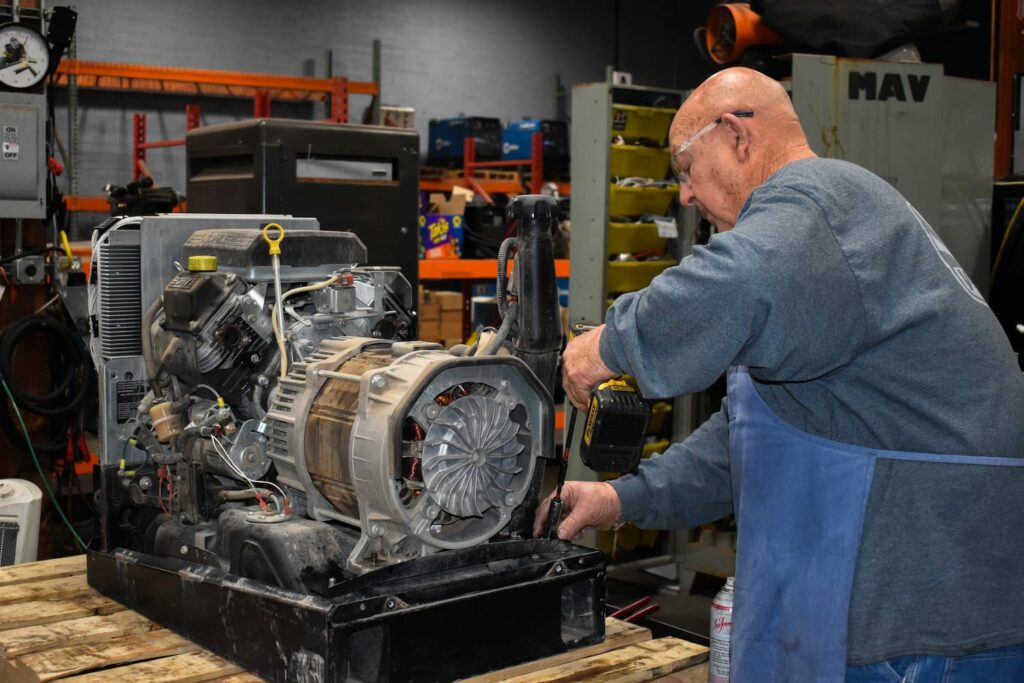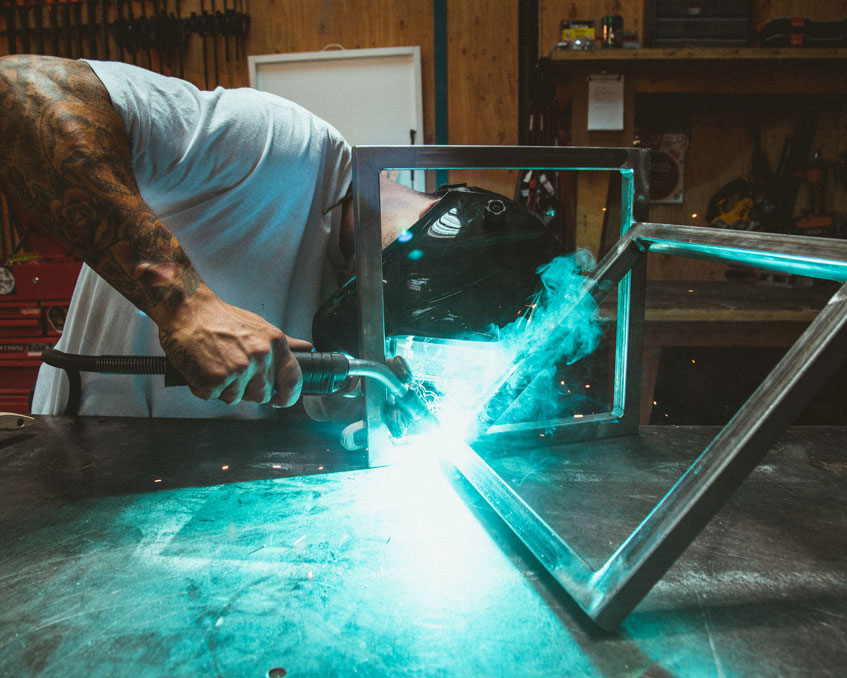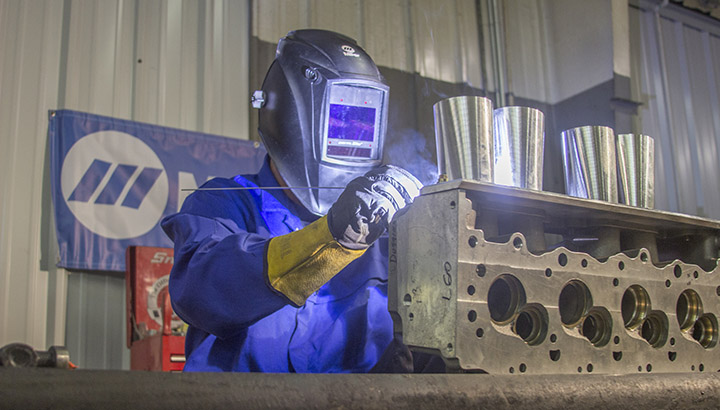Reliable weld inspection practices shared by Montana Mobile Welding and Repair
Wiki Article
Typical Welding Repair Issues and Exactly How to Address Them Effectively
Welding fixings frequently encounter an array of concerns that can jeopardize the integrity of the last item. Usual problems include insufficient penetration, porosity, and misalignment, to name a few. Each defect provides unique challenges that call for specific techniques for resolution. Understanding these concerns is essential for welders aiming to improve their skills and end results. This discussion will explore these typical welding fixing issues and efficient approaches to resolve them.Poor Penetration
Insufficient penetration takes place when the weld steel falls short to completely fuse with the base material, resulting in weak joints and prospective structural failures. This issue often originates from not enough heat input, incorrect electrode angle, or improper welding rate. Welders might experience poor infiltration as a result of a miscalculation of the required criteria for a particular material density or kind. Additionally, contamination on the base material's surface can hinder efficient bonding, exacerbating the problem. To resolve insufficient infiltration, welders should ensure ideal settings on their devices and preserve a tidy work surface area. Routine inspection of welds is advised to determine any deficiencies early, enabling timely adjustments and the avoidance of jeopardized structural integrity in welded settings up.Porosity
Porosity is a common problem in welded joints that manifests as tiny gas bubbles caught within the weld steel. This problem can jeopardize the integrity of the weld, leading to reduced strength and possible failing under anxiety. Belgrade Fabrication. Porosity generally arises from contamination, moisture, or incorrect welding methods, which enable gases to escape into the molten weld swimming pool. To resolve porosity, welders must assure correct surface preparation, keep a tidy working environment, and utilize ideal welding criteria. In addition, choosing the right filler material and shielding gas can reduce gas entrapment. Routine examination and screening of welds can assist recognize porosity early, guaranteeing timely corrective activities are taken, therefore preserving the quality and dependability of the welded structureMisalignment
Misalignment in welding can occur from various elements, including inappropriate configuration and thermal growth. Recognizing the source is important for reliable resolution. Several improvement techniques are available to straighten elements and assure architectural integrity.Root causes of Imbalance
Welding imbalance typically stems from a variety of underlying problems that can endanger structural honesty. One main reason is inappropriate fit-up of elements prior to welding, which can result in gaps and irregular surfaces. Variations in thermal growth throughout the welding process can additionally cause distortion, especially if the products being signed up with have different coefficients of expansion. In addition, poor fixturing and securing might stop working to hold elements safely in position, bring about movement throughout welding. Inadequately maintained devices, including welding machines and devices, may present variances in the weld grain, further adding to misalignment. Operator mistake, stemming from inadequate training or experience, can additionally play a significant duty in producing misaligned welds.
Correction Strategies Readily Available
Dealing with imbalance successfully needs a mix of corrective methods customized to the particular problems available. One typical technique is the use of jigs or fixtures to hold parts in the appropriate setting during welding, ensuring constant positioning. Additionally, pre-heating the products can aid lower distortion and enhance fit-up. For considerable imbalance, mechanical realignment techniques, such as making use of hydraulic jacks or clamps, can be utilized to remedy the position prior to welding. Post-weld warmth treatment might additionally be needed to alleviate stress and anxieties triggered by misalignment. Lastly, cautious assessment and adjustment throughout the setup phase can protect against misalignment concerns from coming to be considerable issues, advertising a smoother welding process and boosting general structural integrity.Distortion
Distortion is an usual challenge in welding that can develop from numerous factors, including irregular cooling and heating. Comprehending the reasons for distortion is necessary for carrying out reliable prevention techniques. Resolving this issue not just improves architectural honesty yet additionally enhances the total quality of the weld.Reasons for Distortion
When based on the extreme heat of welding, materials often go through adjustments that can bring about distortion. This sensation mostly emerges from thermal expansion and contraction during the welding procedure. As the weld area warms up, the product increases; upon cooling, it acquires, which can produce interior stress and anxieties. On top of that, uneven heating throughout a workpiece can exacerbate these anxieties, leading to bending or flexing. The sort of product also plays a substantial role; steels with differing thermal conductivity and coefficients of growth might react differently, bring about unpredictable distortions. Additionally, inadequate joint layout and insufficient fixturing can add to imbalance during welding, enhancing the chance of distortion. Understanding these reasons is important for efficient welding fixing and prevention techniques.Prevention Techniques
Effective avoidance techniques for distortion throughout welding concentrate on regulating warm input and making sure appropriate joint layout. Maintaining a regular warm input aids to minimize thermal development and contraction, which can result in distortion. Utilizing strategies such as preheating the workpiece can also reduce the temperature level gradient, promoting uniform heating. Furthermore, choosing suitable joint styles, such as T-joints or lap joints, can boost security and reduce tension concentrations. Executing correct fixturing to safeguard the workpieces in location additionally aids in keeping alignment throughout the welding procedure. Staggered welding series can distribute warm more equally, preventing local distortion. By using these strategies, welders can considerably decrease the probability of distortion and boost the total high quality of their welds.Cracking
Cracking is a typical concern come across in welding fixings, often arising from various aspects such as improper cooling rates, product option, or poor joint preparation. The occurrence of fractures can significantly endanger the honesty of the weld, resulting in possible failures during operation. To address this issue, welders should initially evaluate the source, making certain that materials are compatible and appropriately chosen cswip 3.0 for the details application. In addition, managing the air conditioning rate throughout the welding process is essential; quick air conditioning can induce tension and bring about splitting. Correct joint layout and prep work also contribute to minimizing the danger. Implementing these methods can boost weld top quality and resilience, ultimately reducing the chance of breaking in ended up weldments.
Incomplete Blend
A significant problem in welding repair services is incomplete fusion, which happens when the weld steel does not appropriately bond with the base material or previous weld passes - Montana Mobile Welding and Repair. This issue can result in weak points in the joint, possibly endangering the honesty of the bonded structure. Aspects adding to incomplete fusion consist of not enough warm input, inappropriate welding method, and contamination of the surfaces being signed up with. To address this problem effectively, welders need to ensure proper pre-weld cleansing and surface area prep work, along with readjust their welding criteria to accomplish sufficient penetration and fusion. Normal examination during the welding procedure can additionally help identify incomplete combination early, enabling timely rehabilitative measures to enhance the overall quality of the weldOverheating
While welding repair services can improve architectural integrity, overheating offers a significant challenge that can lead to product degradation. Excessive heat throughout welding can alter the mechanical homes of metals, resulting in decreased stamina, increased brittleness, and bending. This phenomenon is especially essential in high-stress applications where architectural integrity is vital. Determining getting too hot can include aesthetic inspections for staining or distortion, in addition to checking temperature level throughout the welding procedure. To minimize the threats linked with getting too hot, welders need to use appropriate strategies, such as managing warm input, adjusting travel rate, and making use of ideal filler products. Furthermore, applying pre- and post-weld warm therapies can assist bring back material residential properties and enhance the general high quality of the repair work, ensuring long-lasting performance and security.Frequently Asked Inquiries
What Are the Common Indications of a Welding Problem?

How Can I Test My Welds for High quality?
To check welds for high quality, one can make use of aesthetic assessments, ultrasonic screening, and radiographic methods. Each method ensures structural honesty, recognizes defects, and validates adherence to defined criteria, inevitably boosting the dependability of the bonded joints.What Security Safety Measures Should I Take While Welding?
When welding, one must focus on safety and security by putting on suitable personal safety tools, making certain proper ventilation, safeguarding combustible materials away, keeping a clean office, and recognizing surroundings to stop injuries and mishaps.Can I Repair a Weld Without Remodeling the Entire Joint?
Fixing a weld without remodeling the entire joint is possible, depending on the damage (Montana Mobile Welding and Repair Belgrade Welding). our website Strategies such as grinding, adding filler product, or utilizing a welding process can efficiently address certain problems while preserving the surrounding frameworkWhat Equipment Are Crucial for Efficient Welding Repairs?
Important tools for reliable welding repairs consist of a welding maker, cord brush, grinder, protective gear, clamps, and filler materials. Each device plays an essential role in guaranteeing quality and safety and security during the repair process. Porosity usually emerges from contamination, moisture, or inappropriate welding methods, which allow gases to leave right into the liquified weld pool. Badly kept tools, including welding you could try these out devices and devices, might introduce disparities in the weld grain, further contributing to misalignment. When subjected to the intense warm of welding, products typically undergo changes that can lead to distortion. Splitting is an usual issue experienced in welding repair work, often resulting from different elements such as incorrect cooling rates, material selection, or poor joint preparation. A significant problem in welding fixings is insufficient fusion, which occurs when the weld metal does not appropriately bond with the base product or previous weld passes.Report this wiki page